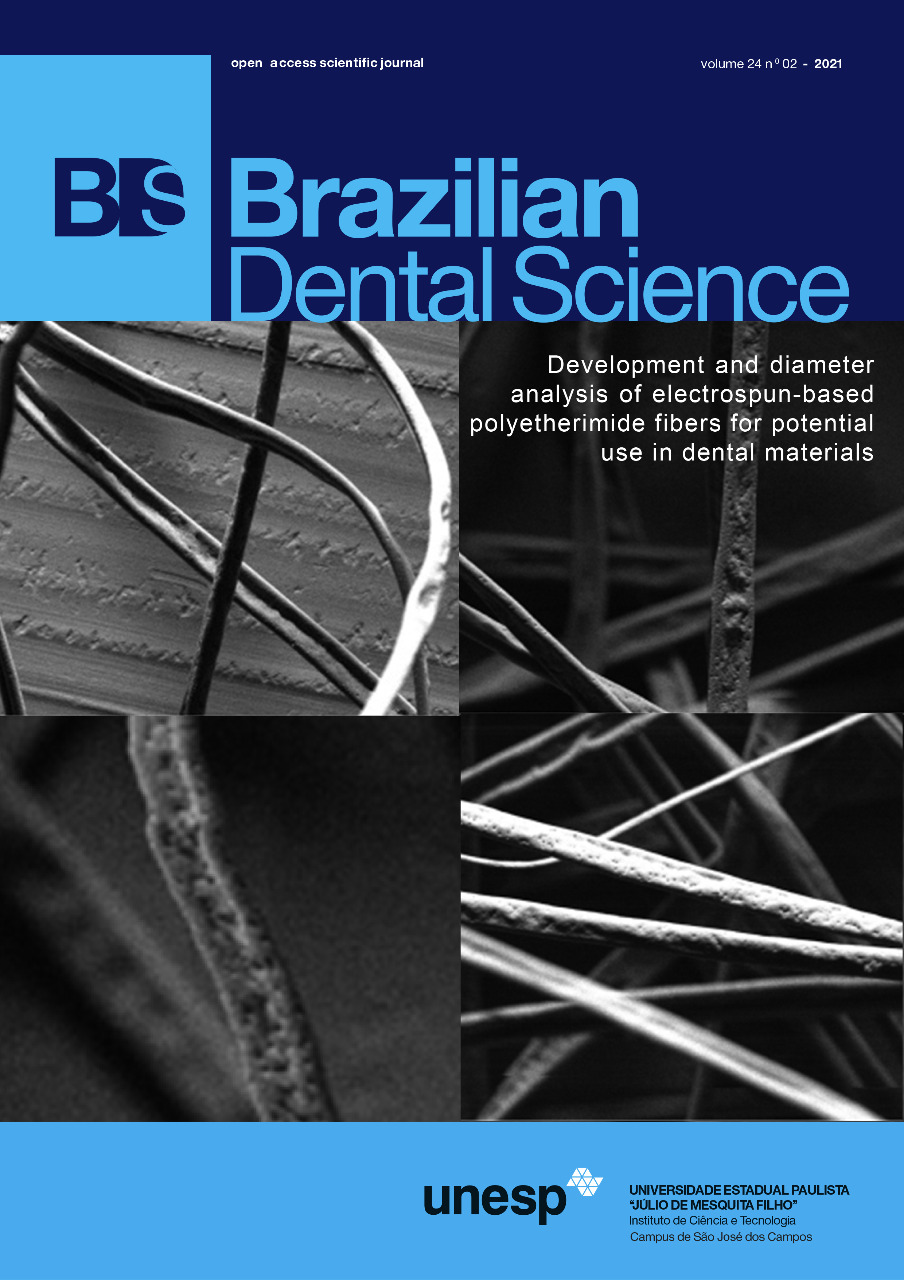Influence of Khat Extract (Catha edulis) on Corrosion Resistance of Co-Cr Dental Alloys
DOI:
https://doi.org/10.14295/bds.2021.v24i2.2248Abstract
Objective: The aim of this experimental study was to assess the effect of khat extract with different concentrations on the corrosion resistance of cobalt-chromium (Co-Cr) dental alloys used for removable denture. Material and Methods: The corrosion resistance of three Co-Cr alloys (Neobond II®, Kera 501® and PD Casta H®) was evaluated in artificial saliva in presence of three different concentrations of khat extracts. Fusayama-Meyer artificial saliva was used as a reference solution. The corrosion properties of the alloys were analyzed using potentiodynamic polarization, electrochemical impedance spectroscopy and surface analysis. The data was presented in means, standard deviations, and related figures. Comparison between the different concentrations was done using 1-way ANOVA test. The surface analysis was performed using scanning electron microscopy (SEM). Results: the results showed that the corrosion resistance of the three alloys tested (Neobond II®, Kera 501® and PD Casta H®) decreased in artificial saliva containing khat extract compared with that of the reference solution. Additionally, the corrosion resistance of the three Co-Cr dental alloys decreased by increasing the concentration of khat extract. Furthermore, the results indicate that Neobond II® alloy showed the least corrosion resistance compared with that of Kera 501® and PD Casta H® alloys. Conclusion: Khat extract with different concentrations had negative impact on the corrosion resistance of Cr-Co alloys. More in-vivo studies are highly recommended to confirm the results of the present study
Keywords
Khat; Catha edulis; Partial denture; Corrosion resistance.
Downloads
Downloads
Published
How to Cite
Issue
Section
License
Brazilian Dental Science uses the Creative Commons (CC-BY 4.0) license, thus preserving the integrity of articles in an open access environment. The journal allows the author to retain publishing rights without restrictions.
=================




























